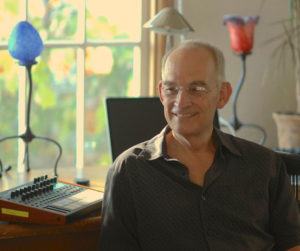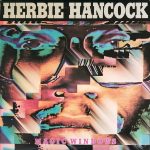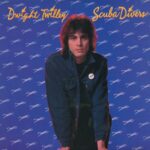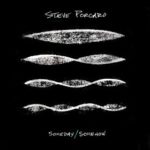Roger Linn
 Roger Linn is an American industrial designer, mainly of electronic drum machines, and has recently branched out into guitar effects pedals. He is known for designing the first drum machine to use digital samples. His products have become underground hits, being used on many famous recordings. Besides being an accomplished guitarist and producer, Roger Linn is also a member of the Dead Presidents Society, a group of distinguished innovators in the field of electronic music.
Roger Linn is an American industrial designer, mainly of electronic drum machines, and has recently branched out into guitar effects pedals. He is known for designing the first drum machine to use digital samples. His products have become underground hits, being used on many famous recordings. Besides being an accomplished guitarist and producer, Roger Linn is also a member of the Dead Presidents Society, a group of distinguished innovators in the field of electronic music.
Roger Linn was a professional guitarist in California in 1978 when he began to develop the LM-1 as an accompaniment tool for his home studio. He had experimented with many of the preset rhythm boxes which were popular at the time, but was dissatisfied and “wanted a drum machine that did more than play preset samba patterns and didn’t sound like crickets.” Having learned how to program in BASIC and assembly language, Linn set to work on a computer program which could play user-programmed rhythm patterns, as well as chain them together to form a song.
According to Linn, the first to suggest the idea of digital samples was Steve Porcaro of Toto. The drum sound samples were created by Roger & Art Wood, a Los Angeles session drummer, who also played drums with Cher, Bette Midler, Tina Turner, Gary Wright, Peter Frampton, James Brown and others, as well as on numerous movies and TV shows.
Linn achieved his sounds by using a chip, built into the machine, which converted the digital samples into analog audio. His first prototype, manufactured at some time during 1979, was a cardboard box which contained the electronic components of the drum machine. Supposedly, Linn brought this prototype to parties and jobs and marketed it to fellow musicians, including Peter Gabriel, the members of Fleetwood Mac, and Stevie Wonder, who bought one of the first units ever produced. (Wonder can be seen programming his LM-1 in a 1981 BBC documentary.)
In total, somewhere between 500 and 725 units were built and sold between 1980 and 1983, when the LM-1’s successor, the LinnDrum, was released. The first 35 units were assembled in Linn’s home, before manufacturing and distribution was taken over by 360 Systems, run by Bob Easton. The first 10 of these 35 units have distinctive features, as described below.
Check out his website: http://www.rogerlinndesign.com/
Roger’s work posted so far:









Jan Lücker on Facebook
May 22, 2016 @ 18:12
During my research I saw Roger’s name on several Toto albums and start to dig. That is the cool part of my work. I added Roger to my Players list on my website.
Cheryl Milonopoulos on Facebook
May 22, 2016 @ 18:22
I think David Robinson of The Cars first bought Roger Linn’s drum machines back in 1981.
Jan Lücker on Facebook
May 22, 2016 @ 19:03
Added to his discography: http://www.sessiondays.com/2016/05/1976-dwight-twilley-band-sincerely/
Frédéric Huybens on Facebook
May 22, 2016 @ 23:34
First album recorded completely with the Linn drums is I think ‘Steve Hackett – Cured’ in 1981. First song could be Herbie Hancock ‘Twilight Zone’ released in 1981 and composed with Adrian Belew. https://www.youtube.com/watch?v=RV4m0nQYuBQ
Jan Lücker on Facebook
May 23, 2016 @ 10:48
Thanks Frederic, just added this album on my website: http://www.sessiondays.com/2016/05/1981-herbie-hancock-magic-windows/